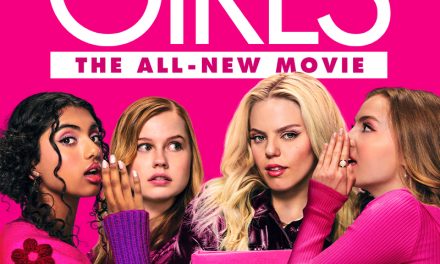A stunning new entry from director Guillermo del Toro, Nightmare Alley is film noir at its best.
In 1940s New York, down-on-his-luck Stanton Carlisle (Bradley Cooper) endears himself to a clairvoyant and her mentalist husband at a traveling carnival. Using newly acquired knowledge, Carlisle crafts a golden ticket to success by swindling the elite and wealthy. Hoping for a big score, he soon hatches a scheme to con a dangerous tycoon with help from a mysterious psychiatrist who might be his most formidable opponent yet.
The film boasts a star-studded cast, including Cate Blanchett, Rooney Mara, Willem Dafoe, Toni Collette, David Strathairn, Ron Perlman, and more.
Nightmare Alley: Here there be monsters
Despite its ominous name, Nightmare Alley strays from del Toro’s typical faire. It’s not dark fantasy or gothic romance. You won’t be transported to a magical realm or an apocalyptic future. Doug Jones does not appear as some sort of fascinating but unnerving creature.
And yet, Nightmare Alley remains remarkably del Toro-esque.
As much as del Toro has always understood the humanity within monsters, Nightmare Alley makes it clearer than ever he also understands the monstrosity within humans. Viewers will immediately clock the darkness within Cooper’s Stanton, despite his cloak of ambition and dreams and romance. Even as you watch him rise up in the world, you know it can’t last; that darkness within will get him in the end.

Really, that’s the beauty of film noir. Nightmare Alley is not a film meant to shock you with a twisting, unpredictable end. (Though of course, it’s not without its surprises.) It’s about going on a journey, examining the nature of humanity. Where do we belong in the world? Why do we do things we know are bad for us? What is choice, and what is inevitable?
And to keep that journey from getting too existential or difficult to conceptualize, we’re going to do it all in a story about a mentalist scam.
An outstanding production
This film is awards-worthy based on looks alone. From richly saturated colors to detailed and cinematic set pieces, Nightmare Alley immerses you in every part of its world. (Its two worlds actually; the carnival setting from the film’s opening feels entirely different than the New York City of the rest of the story.)
The office occupied by Blanchett’s character in particular is standout; I’m obsessed with the aesthetic of it, honestly—not to mention the symbolism of all the secret doors therein. Truly, I don’t remember the last time I saw such a beautiful set that was still used so practically. Not just as a lingering backdrop for cinematic effect, but playing an important function in the story. And while Dr. Ritter’s office is my favorite example of this, it’s true for most of the film’s biggest setpieces.

Great care went into the costuming of the film as well. Every look compliments the status and personality of its wearer. You can easily track Stanton’s journey just from his wardrobe, moving from down-on-his-luck carnie to tuxedo’ed ballroom performer. Visually, this film is a feast, proving once and for all—if anyone needed further evidence—del Toro doesn’t need magic to build an immersive world.
A top-notch cast ties it all together
So, we’ve got a compelling story about the nature of humanity, decorated with incredible visuals, directed by a visionary. That means all you need is the right actors to tie everything together.
Luckily, this movie is jam-packed with talent. Cooper shoulders his lead role well, slipping from quiet carnie to master showman with ease. He’s believable as emotional and yet manipulative throughout the movie, toeing the line between sympathetic and dislikeable.
Blanchett, always amazing on screen, seems practically made for a role in film noir. (In fact, del Toro said he had written Dr. Ritter with Blanchett specifically in mind.) Cooper’s Stanton is a powerhouse, but Blanchett’s Ritter takes him on with apparent ease. Their game of one-upmanship adds such a compelling dynamic to the story. Nightmare Alley wouldn’t work without it.

Likewise, Mara’s Molly remains sympathetic and likeable throughout, despite her circumstances. Dafoe makes such an impact as the carnival owner in the first act, you practically forget his character isn’t around longer.
All in all, Nightmare Alley is full of memorable roles, elevated by the talent portraying them. At two and a half hours, it does push the boundaries of an acceptable runtime a bit; frankly, while important thematically, the carnival opening runs long, considering it’s largely setting up the “real” plot of the film. And as much as I loved Blanchett in the film as it is, I wouldn’t have minded learning a bit more about Dr. Ritter. She’s just so compelling, it seems a shame not to.
But overall, I think Nightmare Alley knocked it out of the park; I was thoroughly engrossed while watching, and it’s a film I look forward to watching again. You can no doubt expect to hear more about this one come awards season.

![Nightmare Alley: A Different Kind of Monstrosity from Guillermo Del Toro [Review]](https://thathashtagshow.com/wp-content/uploads/2021/12/project_20211214_1137405-01-1200x640.png)




